My wife and I have an expression, “nameless blues,” for those bleak moods that seem to arise for no reason whatever. Waking in the morning and just feeling out of sorts, nothing wrong physically but psychically morose, down, blue. “What’s wrong?” The other will ask — after four decades, we’re well attuned to the other’s state of mind. “Nothing. Just feeling down. Don’t know why.” Oh yeah. My baby’s got them ol’ nameless blues. Usually nothing that a hug, or brisk walk in the early morning air, or getting a first cup of coffee won’t fix, just a reminder that my mind has an inscrutable mind of its own.
Then there are the treeless blues. These blues aren’t so easily fixed. It’s what I feel when I see the absence of another old tree in downtown Eureka, lopped down for no other reason that, in doing its natural tree thing, it pushed up the concrete sidewalk with its roots or dropped leaves onto neighboring roofs, plugging up eaves and downpipes, or it obscured someone’s view from their window.
We seem to have a love-hate relationship with trees here in Humboldt. We’re redwood capital of the world, yet the closest virgin Sequoia sempervirens are over half-an-hour’s drive away, other than the few specimens that survived century-old logging in Sequoia Park — most redwoods there are second growth. Compared with Founder’s Grove 40 miles south of Eureka on 101, Sequoia Park looks a little tawdry, a ghost of its pre-logged self.

Outside the Humboldt County Historical Society house before these lovely trees were lopped two years ago. (Barry Evans)
The last few years have seen many of Old Town’s old trees go under the chainsaw, including, ironically, five old trees on the sidewalk outside the Humboldt County Historical Society (8th and H) two years ago “to provide better visibility of the facility” I was told; a couple of beauties in the Eagle House parking lot; ancient firs on each side of California Fish & Wildlife (2nd, G and H); and more recently, this desecration happened outside the library (the City doesn’t have funds to completely remove it at this time, I understand); and more. It’s too depressing to list them all.
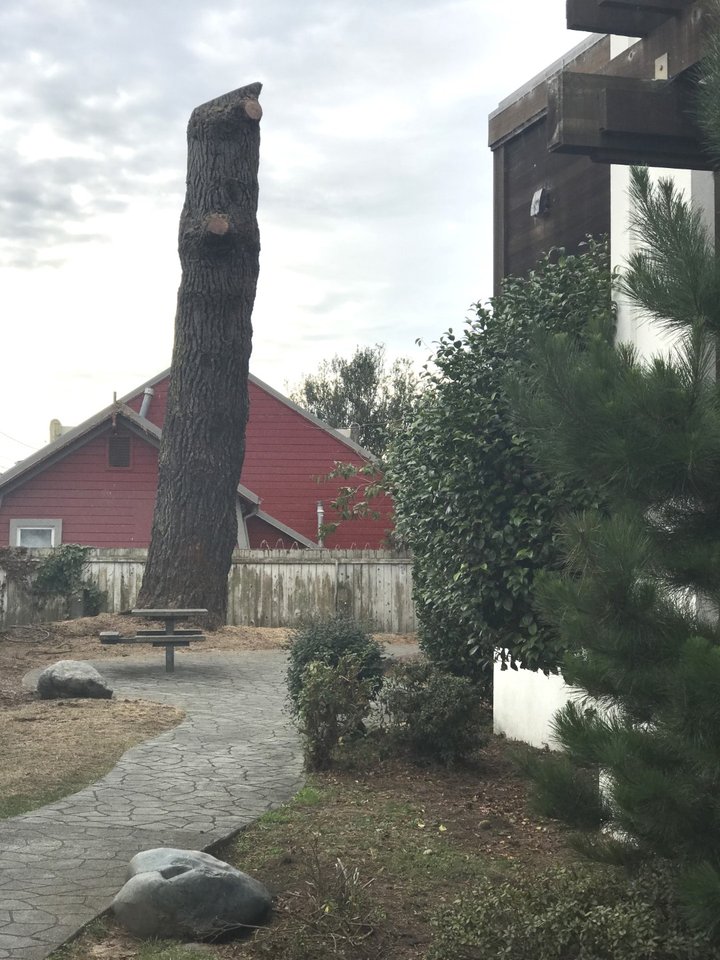
New totem pole outside the library? (Barry Evans)
The usual reason given for tree removal is that the tree roots are cracking and/or uplifting the concrete sidewalk. Yet I know from professional experience (as a recovering civil engineer) that other cities have dealt with this problem without the draconian “chop ‘em down” approach. Taking a leaf out of Willie Sutton’s playbook (“I rob banks because that’s where the money is”), tree roots head to the space between the underside of concrete slabs and the ground beneath because that where the water and oxygen are. So one way of dealing with roots is to eliminate the impermeable concrete, replacing it with interlocking concrete or rubber paver blocks. (The blocks can be adjusted from time to time as necessary.) Another standard treatment is to shave off the edges where concrete panels have lifted, or to fill any gaps where folks can trip. Also, old tires can be recycled to make flexible sidewalk material.
On paper, at least, we have more trees on city streets than ever, thanks largely to Keep Eureka Beautiful. KEB is an all-volunteer program that, since it began planting in city sidewalks in 2006, has planted over 1,100 trees. Virtually any property owner in Eureka who wants a tree outside their home or business can have one for $75 (to partially offset costs) if they undertake to water and care for it after it’s planted. Email mailto:info@keepeurekabeautiful.com for more information. The problem, of course, is that it takes several decades for a sapling planted by KEB to grow into a mature tree.
Just to show urban centers and trees can co-exist, here are recent photos in or near the downtown centers of the capital cities of Lithuania, Latvia, Estonia and Finland.
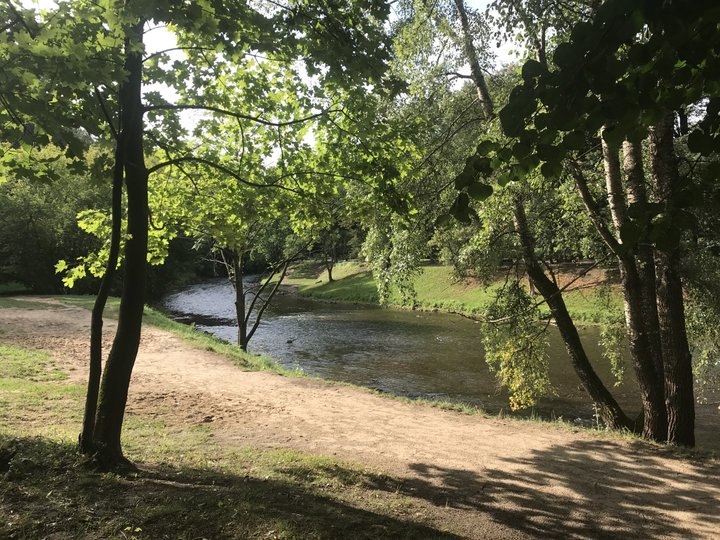
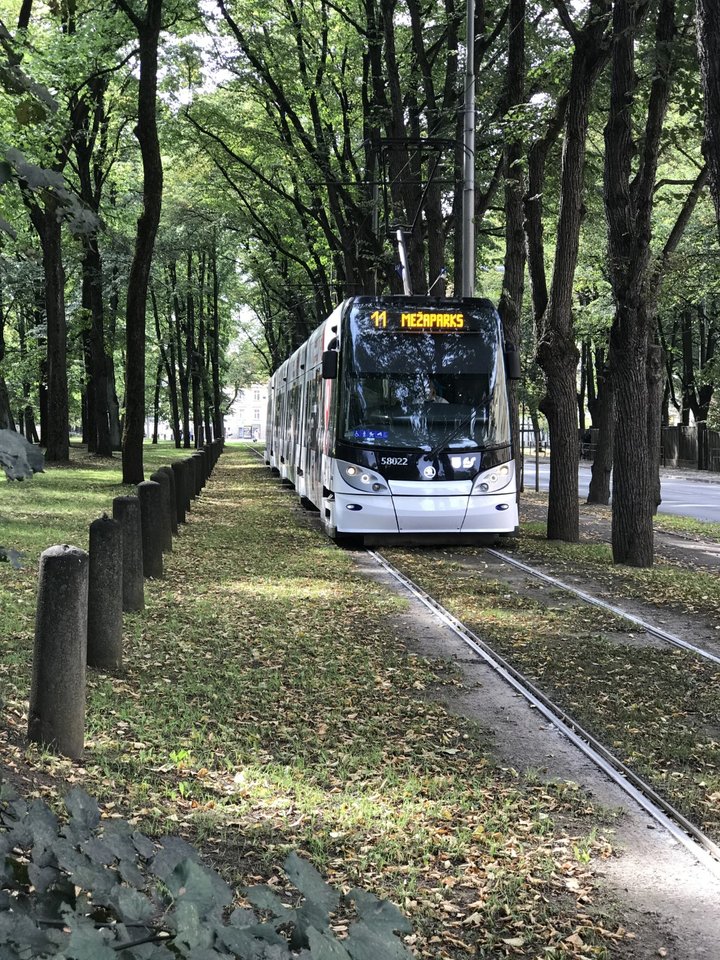
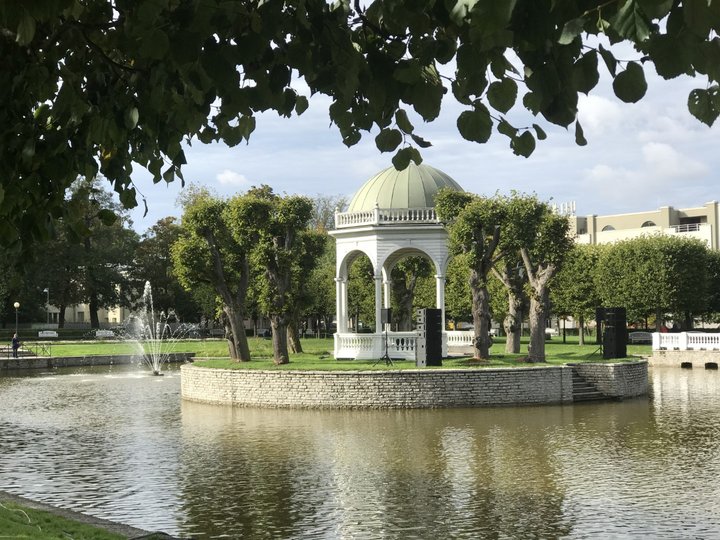
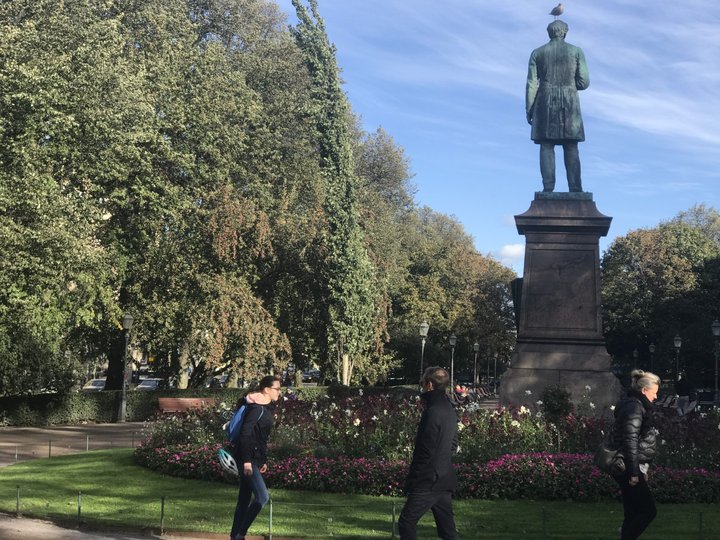
CLICK TO MANAGE